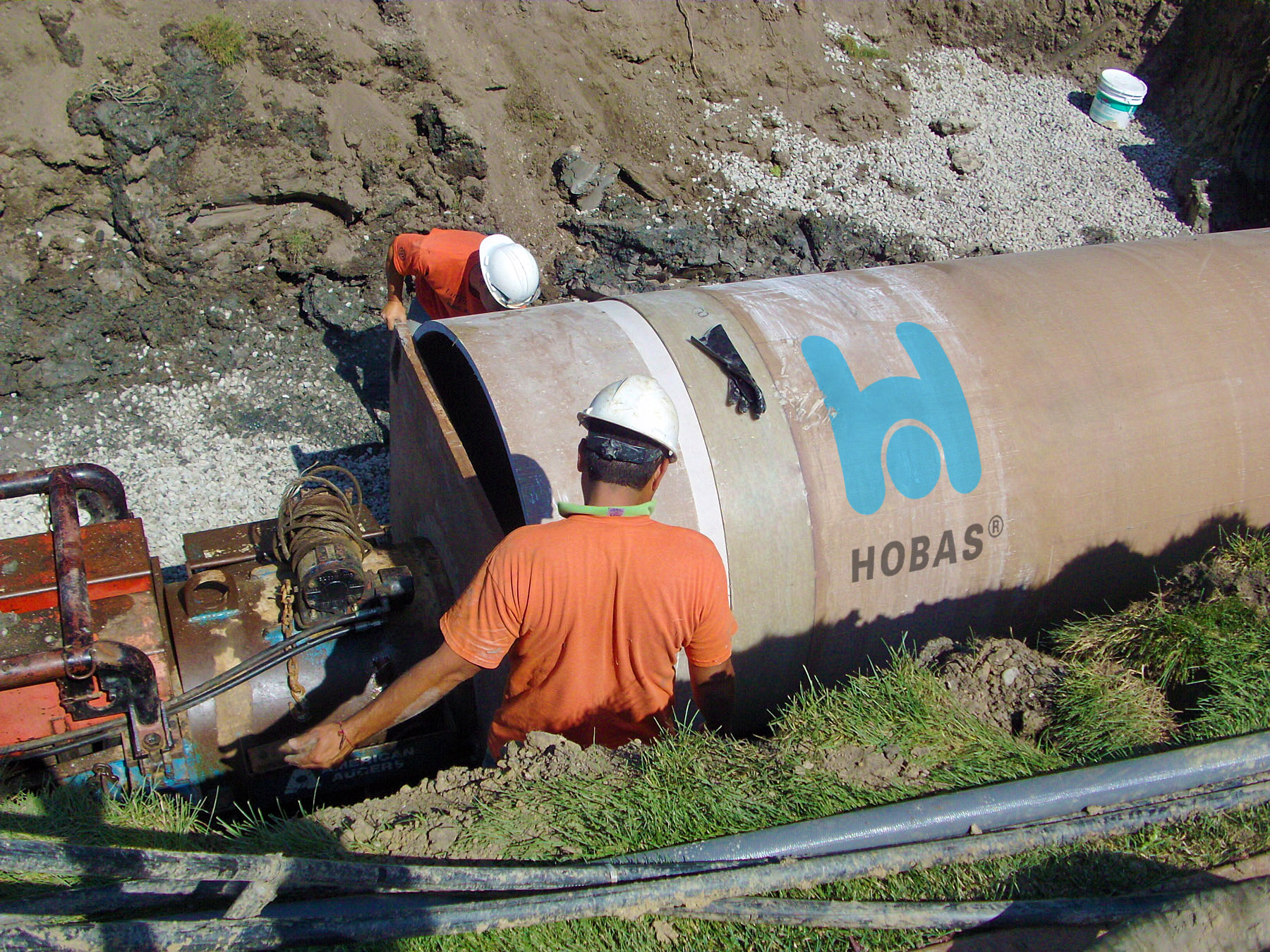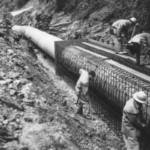
Storm Drain Line in Michigan Successfully Relined with HOBAS Pipes
Situated just 32 km northeast of Detroit, Clinton Township has the biggest population of the 1,242 townships in Michigan. Like most communities, it can provide us with many case studies in evolving infrastructure needs and it is not alone in its challenge to upgrade old infrastructure. Sanitary sewers and their overflows have been getting a lot of press lately, but storm drains continue to be out of sight out of mind and repairs are only made once the situation becomes precarious. In autumn 2009, for instance, the area’s abundance of water and sandy soil, which was very much appreciated by first settlers in the late 1700s, became the source of public work emergency.
“This is a case where corrugated metal storm drains that were installed in the mid-1940s rotted away, blocking the flow of storm water and causing severe underground soil erosion,” said Macomb County public works commissioner Anthony Marrocco. The erosion caused by the deteriorated pipe and wet sandy soils eventually created a 6-m by 3-m sinkhole and the collapsing of the Cottrell Creek Drain. This 65-year old drain accepts over 370 000 m³ of drainage from Clinton Township and surrounding areas.
General contractor, Tyger Excavating, Inc., which provides services including sewer, drainage, water, utilities, excavation and commercial subdivisions, was contacted and hired to perform the remediation work and repairs to the aging infrastructure. Regarding pipe material, Macomb County Drain Commission searched for the best economical way to make the repair. Open cut was not an option due to the location so that sliplining installation was chosen – the area would be subjected to less disruption than if the entire line had been removed and replaced. Having used HOBAS Pipes before and having seen them in use on a few other applications, the County accepted the contractor’s suggestion to utilize CC-GRP which would be a more durable option than the initially proposed profile wall PVC product.
Tyger started work on the line in September 2009. The 6-m-long sections of DN 1350, SN 8900 pipe were inserted into an existing DN 1500 corrugated metal pipe (CMP). To ease installation into the deteriorated line the new pipes were manufactured with a flush bell spigot. The liner pipe was installed in two runs of 75 m each and utilized open cut installation methods for the 3 m area where the 6 by 3 m sinkhole originally appeared.
The material’s strength proved its worth where the pipe had to be jacked into place – being pushed through the existing pipe that was filled with soil. Once the CC-GRP was in place, the material was excavated from within the pipe. After insertion, the annular space between the liner pipe and the deteriorated CMP was grouted. The grout used to fill the annular space gives off heat as it cures, and can cause problems for some pipes that are not as heat resistant.
CC-GRP, however, is a thermosetting material and is thus not as affected by elevated temperatures as many thermoplastics which lose properties more rapidly. This means that HOBAS Pipes can maintain adequate strength and, therefore, resistance to collapse during grouting.
Not only are the pipes user-friendly to install but also, they are a long-term solution. “These pipes will be here long after we’re gone”, commented Tom Stockel, construction engineer with Macomb County Drain Commission. “They’re estimated to last up to 100 years.”
“We expected to have more challenges than we actually had”, observed Jeff Peyerk of Tyger Excavating, “HOBAS CC-GRP Pipes made the job easier than we anticipated and the delivery was quick and on time as promised. We would definitely recommend this product for future projects.”
With the end of September 2009, the line is once again in operation and “everything is fine,” stated Stockel.
More information about this application
PROJECT DETAILS
| Project ID: [9636] | |
| Country: | United States of America |
| City: | Clinton |
| Year: | 2009 |
| Application: | Sewer |
| Installation: | Microtunneling, Relining, Open Trench |
| Technology: | Hobas |
| Total Length: | 153 m |
| Nominal Diameter DN: | 1350 mm |
| Nominal Stiffness SN: | 8000 N/m2 |


